Leaderboard
Popular Content
Showing content with the highest reputation on 09/08/17 in all areas
-
Hi mates, as usual I'm abroad for work and I havn't got any updates on ongoing projects, so I've decided to post an old one I carried out in 2000,when i decided to come back to aircraft modelling after many years. The model was an old Airfix and , gift from a friend who had had it for years in his stash and it showed its age, but the shape was quite accurateand the raised panel lines weren't that many to be rescribed, so I decided to have a go with it.Unfortunately I haven't got any pictures of the progressing works ,as I didn't have a digital camera at that time. At that time there weren't any resin set for the engine bay, so I decided to add an Aires DB 601 engine and cockpit. The decal sheet I used was by Third Group and depicted several aircraft among which I chose Black 4. As the canopy supplied with the kit was...a bit thick, I purchased one by Squadron. The build took a few months. I rescribes the panel lines and I scratch built what's around the engine. At the end I was quite happy with the result. Here're some pictures. To give it a bit of life, I added a couple of engineers by Dragon, but I didn't like them, and they were a little too dressed for an african environment, so the model was left for a while like this, waiting for better times! Then one day, after a few years, I saw this and I thought it would have been a nice addition to my 109. I also found these guys and they looked perfect for th purpose. So I took a wooden base I had bought in the States and I wentback to work. I assembled the guys first. Then I tried different layouts , trying to keep it balanced and to avoid the "too crowdy" effect. Once happy with the layout, I went on with the painting process. And now some pictures of the ending result. That's it! Hope you like it! Massimo24 points
-
Hello all. My latest build is the Airfix Wildcat. All in all a neat little kit and in my opinion one of their best yet. I stuck with the kit markings and used Sovereign Colourcoats enamels. Weathering was done using oils and pigments. Thanks for looking and all comments welcome!22 points
-
Hi Here is my last build with this Special Hobby Northrop Nomad. This is one of the long family of all metal aircraft designed by Jack Northrop and known as A-17 or DB 8. I chose to build this SAAF trainer of the 42nd Air School based at South End, Port Elisabeth, South Africa in 1941. Thanks to Tonyot who gave me a picture of her I could add the gun stubs and the Venturi. Sadly I made a beginner fault with some super thin glue in front of the canopy thus the white layer at the junction with the fuselage. Anyway it was a fun build and there are many other DB 8 in my stash to build other exotic roundels. About roundels I have to say that those with white are really too thin and to compensate I used twice of them. Actually when visiting Special Hobby factory last month I asked a new decal sheet and they kindly gave me one. It could be easy to make a white undercoat before putting the decals. Patrick20 points
-
Hi Everyone, Thought I`d share some pic`s of my latest addition to my collection of `Secret War in Laos` collection My second attempt at Gallery Models 1/48, H-34 Choctaw kit Finished in the markings of the Royal Laos Air Force, but based at Udorn Thailand and partly operated by Air America during the `Secret War` Built mostly from the box contents, the only differences being, pipes/cables for the winch, brake pipes and, antenna fit, which were sourced from the spares box or carved out of a bit of clothes peg. Improved the kit a bit by removing the plastic from behind the etched mesh parts, to give a see through look Decals were sourced from the spares stash and some from the kit Hope you enjoy, thanks for looking Cheers Russ. PS, if anybodies interested in the subject I`ll be gradually replacing the PB images in previous posts as I get time.15 points
-
Hi all, Haven't had much time for modelling lately, but as I'm on holiday this week and it's raining, (typical) I went through my stash and decided to do a nostalgia build. When I was a kid, a mate of mine bought me the old Airfix 1/72 FW190D as a birthday present. I found the same boxing of the same kit on sale at a model show some time back for the princely sum of £3, so I decided that I'd have a go at something from my youth. Strictly out of the box, no scratchbuilding, just build and paint. Apart from a problem with the canopy being crazed and scuffed and the decals being stuck to the greaseproof paper protecting them, it was a nice kit and went together with virtually no need for filler. I had to soak each decal individually, wash it clean of the now powdery adhesive, and fix them in position using MicroSet and Sol. Despite this, the upper win crosses were just too far gone and I had to resort to masking and spraying them. Two days from start to finish, with the only addition being an antenna wire from stretched sprue. It's not my best build ever, but I'm on holiday so I wasn't taxing myself. Here's the results: It's a bit clunky in places, but it went together well and was a nice relaxing build, which is what I was looking for! Now, what's next...? Dean15 points
-
12 points
-
Kit manufacture: New Tool Tamiya Scale: 1/48 Type: F-14A Extras used: Eduard seatbelts, RBF tags, Master pitots. Furball Decals and walkways Paints and colours used: All MRP, apart from detail Well, its been a few months and i've finally decided to haul all the photography equipment out to photograph some recent builds. Here is the new tool tamiya F-14, and i can only echo how absolutely sublime the kit is. OutstandingI used this as a canvas to play with MRP paints as i really wanted to achieve that worn line jet look without going OTT. They performed flawlessly, and hold no real vices. Needless to say, since this build, the MRP collection has grown rather exponentially! Decals are from Furball, as are the stiffening plates for the fins. I also tried a new technique to me to achieve the scuffs under the wing sweep collars. I carved off some pencil lead into fine shards, and trapped them between the wing and wing collars. Carefully swing the wings too and fro, and you will be left with an accurate curve appropriate to the geometry of the sweep. I think it works rather well Finally, another first try was to buy some headlight tinting film from eBay. this is a very thin self adhesive film that some like to adhere to their cars to pimp them up. I found that its works great to tint the forward canopy visor. Optically clear, its much more uniform than applying a clear paint. A thoroughly enjoyable project I hope you like and can take some inspiration!F-14 4 by Chris Fleet, on FlickrF-14 1 by Chris Fleet, on FlickrF-14 5 by Chris Fleet, on FlickrF-14 2 by Chris Fleet, on FlickrF-14 12 by Chris Fleet, on FlickrF-14 3 by Chris Fleet, on FlickrF-14 6 by Chris Fleet, on FlickrF-14 11 by Chris Fleet, on FlickrF-14 7 by Chris Fleet, on FlickrF-14 8 by Chris Fleet, on FlickrF-14 9 by Chris Fleet, on FlickrF-14 10 by Chris Fleet, on Flickr12 points
-
'A modeller of whom we're aware Painted roundels on just for a dare, Though his spray was excessive His humour transgressive Ensured a fnaar fnaar fnaar - so there!'12 points
-
Thanks Giorgio, Keith, Martian, Michael, John, Tony and Johnny - all very kind Thanks Cookie - it's thanks to you that I even started this route and, as you can see below, I still need to try harder! Next stage, re-insert the red mask, THEN remove the blue, again burnishing well especially the panel lines. Then you can unmask the red: Not bad. Spray the blue, wait a bit then OFF with the masks: Oh dear, oh dear, oh dear (or words to that effect), like Cookie I've got some white showing. AND look at that 'ring around the collar' (old joke for our US friends)! I can understand the white bits (tee hee) but why, oh why, do the masked roundels appear to be smaller than the removed decals? Here's why: The Revell kit decals are smaller than the Xtradecal ones. Hmmm. Luckily (very luckily) for me I appear to have lined the masks up so that the painted roundels are in the same place - pure luck. After a bit of blue touch up I rubbed the residue from the old decals with a damp cotton bud: Rear one still drying. Happy with those. Wings now Klear coated ready for weathering tomorrow.12 points
-
After a long battle Fiat is finished. Markings are my own work + old masks and decals from other models. Work in progress topic: http://forum.largescaleplanes.com/index.php?showtopic=69719&hl= My Spanish collection - Cricket, Rata and Stuka. All beautiful in their own way :11 points
-
I cannot let that stand, Sir! "Rig to live, live to rig!"11 points
-
An older kit, but with using some PE sets, it can be spruced up to look presentable. The aircraft they give you never served together on the ship. The only ones you can use are the Gannets and Wessexes, and they didn't serve at the same time. But, they add color and interest. DSCN4687 by Ronald Bell, on Flickr DSCN4691 by Ronald Bell, on Flickr DSCN4692 by Ronald Bell, on Flickr DSCN4693 by Ronald Bell, on Flickr DSCN4694 by Ronald Bell, on Flickr DSCN4695 by Ronald Bell, on Flickr DSCN4696 by Ronald Bell, on Flickr DSCN4697 by Ronald Bell, on Flickr8 points
-
Yay! I've finished! Whilst this kit has it's issues, I'm very happy with the final result. Some care was needed when assembling the engine casings, the canopy is fiddly, and the decals are brittle and horrendous. Also, it's a tail sitter. There just isn't the room in the front of the airframe to put enough weights (the nosecone is full of weights!). Out of curiosity, placed a load of extra weight on the front, and nearly buckled the undercarriage, and it still sat on its tail! Solution is a clear acrylic jewellery ring display cone, cut to size, and placed under the fuselage, at the rear of the wing. Despite that, though, this is a nice little kit. Painted predominantly with the Hataka paints listed here:- A187 Tan A125 NATO Black A050 Light Grey A101 Traffic White A040 Black-Grey A018 US Olive Drab (Late) Plus Mission Models Highway Yellow All of the above supplied by M.A.N. Models Display base courtesy of Coastal Kits Display Bases Untitled by ian gaskell, on Flickr Untitled by ian gaskell, on Flickr Untitled by ian gaskell, on Flickr Untitled by ian gaskell, on Flickr Untitled by ian gaskell, on Flickr Untitled by ian gaskell, on Flickr Untitled by ian gaskell, on Flickr Untitled by ian gaskell, on Flickr Untitled by ian gaskell, on Flickr Untitled by ian gaskell, on Flickr Untitled by ian gaskell, on Flickr Untitled by ian gaskell, on Flickr7 points
-
Hi All, Finished this a little while ago and used it to try out a few new tools and techniques with weathering. First time using plaster mixed with pigments to create mud, and tried to go for a darker, still wet, look for the centre of the tracks and the lowest parts of the mud. In hindsight (and I may go back at some point and correct) the tracks should probably have been all wet mud, with only small amounts of the lighter stuff. the kit itself was an absolute joy to assemble. Went together very easily and while I cannot speak for accuracy, I was at Bovington last summer and to my eye I couldn't see any major flaws between it and the photos of the real ones I took. It's definitely a nice kit.6 points
-
After all is said and done, they turned out way better than decals Ced! I quit using using a white base for roundel painting because of those dreaded 'rings' that always seem to result. I've starting doing the opposite of the generally recommended order: I paint the darkest color first and end with white (blue then red then yellow then white), and things have gone much better. Although, it looks like I did yellow last on this one, for the convenience of masking off the leading edge stripes at the same time.6 points
-
This is the miniest of mini updates - so feel free to pass directly on.... Had to work most of yesterday evening - the joys of being self employed.......... But i did at least find some distraction in squirting (technical term adequately describing the Fritag technique) some Tamiya primer on my legs (oh why am I getting ran into the whole 'legs' banter....) and I think the addition of the primer shows off the detail so far a bit better: On thing that has concerned me is the robustness of the cyano'd joint. I had visions of popping the hawks on their U/C and them collapsing..... The joints should get some support from the oleo sections when in situ - but as a belt and braces I decided to support the joint by drilling a 0.4mm hole and inserting a length of 0.4mm nickel tube, thus (look closely): Better safe than sorry6 points
-
6 points
-
Thanks All for your kind comments. Sorry that it takes me so long to respond sometimes. Hey Everyone, A short report for today. It's been a week or so, of running out of supplies, and brand new techniques, that didn't work out so well, and attempting things I've never done before. I started with the Winch this week, and progress has been slow. Trying to figure out how to build gears from styrene was a no go. I tried to cut the gears by hand, and it really looked like it. I tried to cut gears with a file, not good. I tried tracing around a gear pattern....no. I took a day or so, and then I thought, (which I don't usually do, because I just get into trouble), screw all this trying to build gears, I just went to my local RC shop and bought a bag or two of plastic gears for model airplanes. Problem solved. The parts for the cable guides... you can see the pile of gears I had to choose from. I just went with gears that fit the space and were the same diameter that I needed. The Transfer Case... The Cable Guides... As of today I have managed to build just the Transfer Case and the Cable Guides. I think the gears turned out just fine for this scale, and once I paint these and get everything weathered and worn they are going to look fine right were they are. The Cable Spool is next to build along with the two Cable Guides. Then of course I have to spool the cable around everything. Not looking forward to that. Bye Bye6 points
-
Thanks guys for all your lovely wishes for my mum. Look at these. "Rainbow meds" wow! Dems a lot. Not too much done over the past few days but what has been done I thought I'd share. both engines are sorted. @Martian Hale wasn't wrong about the landing gear. Look right. that bit I found in the box. Phew. And stuck. this will be my next task. before the wheels I saw how good the moulding of the front gunner frame was. sooo good I nearly cried. I had a go at a metal replacement but it looked a bit bobbins so I tidied and fixed. not bad. Ooh by the way I bought some of this for masking canopies after reading this months Airfix mag. next build watch out. all these bits are now ready for a good prime. We are headed out with Bob again Friday for a few days so expect more watching than doing. thanks for popping in. Johnny5 points
-
Member97 posts Mike Tipping08/08 in Air Gallery Guys here is the 1/32 AFV F-16D, Block 52 10th Aviation Squadron In March 2012 the squadron deployed to Israeli Air Force base Ovda for a two-week-long joint exercise with Israel's 115, 117 and 106 squadrons I have a question why is this kit so much more expensive than the normal kit. ok, it comes with some resin bits and a few PE parts, but nothing special. the resin AMRAMS are bent like banana's I am not kidding, and their instructions are not very good either, so it just makes me ask why. Anyway rant over this is the polish air force version, built from the box with a few bits of Eduard PE and painted with Tamiya paints, the figures are all from Reed oak, these are painted with Vajello and oils. Mike5 points
-
Am seriously stuck into the wings, now. Upper wings are formed, and their upper surfaces ribbed and primed. They were made the same way as the lower wings, though I left them a hair longer at the tips, to allow for the dihedral (the Flycatcher upper wings has some, the lower wing doe not). Once I had a wing shaped to plan and section, I marked out on the upper surface its ribbing, and the hinge-line of the ailerons/flaps of the Fairey Patent Camber Gear (dating back to the Great War and the 'Hamble Baby' version of the Sopwith floatplane). The rib pattern was taken off the Grainger drawing I am using, but this agrees, at least under casual inspection, with the plans in the Mushroom Models monograph (albeit those are in 1/48 only). The spacing varies, and does not always match those of the aileron/flaps.... To get ribs, I scrape away some of the surface between the ribs, leaving a raised ridge between depressions. To do this, I generally start with some attention from a 'swizzle stick' thin sanding stick (these are generally three or four millimeters wide, and so quite convenient), then follow by scraping with the curved edge of a #10 blade, held perpendicular to the plastic. This gives a slight curve to the depression, and allows tight control on the edges of the raised ridge created between the 'channels'. The matter is complicated, though, when leading edge 'riblets' are involved, and even more complicated when the bulk of the true ribs do not extend the full chord.... Here is a wing with the 'riblets' put in.... hey are much to narrowly spaced, so I substituted cutting grit sand-paper, folded over itself several times, for the 'swizzle-sticks'. I find this gives as good a curved sanding surface as sand-paper rolled into a tight coil, and it is easier to hold on to.... Here is a wing with all panel ribs put in... At this point, center ribs were put in, and the wing-tips dressed down. The out the depressions between ribs that were not full chord introduced some distortion into the airfoil curve of the upper wing. This was addressed by brute force bending on the plastic (now considerably thinner than its original 1.5mm. Here is a wing with all shaping complete, and under two coats of Future. It was light sanded with polishing grit paper before the Future was applied, and than the Future was hit with a polishing pad. I find the Future smooths out small imperfections in a scraped and sanded surface noticeably. Here is a wing under two light coats of Tamiya fine primer (light grey).... Though only one is shown, both upper wings are at this stage. Next will be putting undersurface ribs (which needs only a token scraping) and scoring and bending for dihedral. I will be starting on the ribs for the lower wings now. Here they are notched and matched to their fuselages... The widths of the fuselages vary a little; it is very slight, but enough to keep the pieces from being compeltely interchangeable, so each wing is now matched to its particular fuselage.5 points
-
There has been various silliness about junk on the canal bottom................... So................. A couple of wheels Soldering up the frame Template for bending frame, along with reduce scale drawing and frame Et Voila We have junk for the bottom of the canal Thanks for looking in Kev5 points
-
Good night to all! here the last birth directly from my workbench... an israeli Mirage III CJ! Base kit is the Eduard, but I used the resin set for cockpit and wheel bays from SBM. Other details are from Eduard photoetched set, pitot from Master. For the natural metal finish I used the Aclad Lacquers and Mr.Paint semi gloss for the final coat. The decals are a mix from the kit and Isradecal set. Hope you'll enjoy. Cheers from Rome, Italy! Mirage_End 20 by valerio, su Flickr Mirage_End 18 by valerio, su Flickr Mirage_En d 19 by valerio, su Flickr Mirage_ End 17 by valerio, su Flickr Mirage_ End 16 by valerio, su Flickr Mirage_En d 15 by valerio, su Flickr Mirage_E nd 14 by valerio, su Flickr Mirage _End 13 by valerio, su Flickr Mira ge_End 12 by valerio, su Flickr Mirage _End 11 by valerio, su Flickr Mirage_E nd 10 by valerio, su Flickr Mirage_End 9 by valerio, su Flickr4 points
-
A new model on the bench. This is a Zvezda model. The Petlyakov PE-2 on 1/48. From what I read in the reviews (Brett Green) it is a very complete model, with good fittings and quite detailed. A model with a little more than 400 pieces. The model. Sprues. Transparencies. Decals. Regards ajcmac4 points
-
4 points
-
Hi, The last (so far) of my Junkers, which I am posting here. After F13, K43, W34, G24, Ju 86 R, Ju 86Z, Ju 87A, Ju 87 B and Ju 87 G now there is a time for Ju 52/3m. Belive or not - but I have not made yet any of Ju-88-388 family... Nor Ju 90/290. Nor 352...Some of them are already waiting in boxes. Honestly - I did one Airfix Ju 88 in school, plus 40 years ago, but very soon I sold it to one collegue. Those time it was very difficult to buy a western country kit, so relatively a big market of second hands was existing and even poor models were bought, washed with NaOH etc and reassembled. So I am pretty glad, that I do not have this old Airfix Ju 88... Presented here Ju 52 is practically OOB, just small modifications were done and different then in kit decals were applied. They came from drawer and the emblems (arm of coats?) of unit on both sides of nose are hand - brush paint on clear decal. The markings are from invasion of Crete, 1941, unit: Stab IV/KGzbV 1 (whatever it menas ). Brush painted with Humbrol, diluted Vallejo matt acryl finish (brush), decals with micro set and micro sol applied. Here it is - please be free to comment Regards Jerzy-Wojtek4 points
-
My fellow modelers, my on-again, off-again relationship with this project has now finally found an end. Like in every build so far there were some first-timers for me: First model kit in 72nd scale. First armor kit since returning to the hobby. First time dealing with all that glorious mud, grime and dirt poducts. Felt like a kid in a puddle, lol. The kit itself is nearly perfect. Awesome details, great fit and six varied schemes to choose from. The real challenge, at least for me, were all those incredible tiny parts. Keep in mind that Renault built a tank with 5 m (16.4 ft) of length and 2.14 m (7 ft) of height. Beside the priming the whole build took place under the magnifier. There is an interesting fact about the history of this tank: Renault started production in 1917, late in WW1. Thus most of them never saw action on the field. This one was, like many of its kind, transferred to the French colonies to ensure dominance of the occupying force. Later, after the armed truce of Compiègne (06/22/1940), in which the Germans allowed France to keep its colonial forces armed, this vehicle became part of the Armee de l'Armistice. The writing on the turret states "Le Champagne". For the presentation I cut and sanded a piece of ebony. What a great material! I finish with the obligatory scale picture. Looking forward to your comments and suggestions. Torben4 points
-
Recently back to the modeling world after many years absence, more on that here. Aiming high with this one. Couldn't pass this one up on eBay, sold as opened box but sealed package. First thoughts upon opening my mailer: Wow, someone was a smoker. I'm guessing our late collector. Heart skipped a beat when I couldn't find the clear plastic cockpit, but it was just hiding. Whew. So far all I've done is wash the parts in some warm soap and water as well as collecting some basic tools. I am on a limited budget, but I'm also in no hurry. I do know this project is going to need filling and I have been researching those products, looking hard at Milliput. I will say that I am going for something a big different as far as results--a lot of the finished models I have seen pictures of seems to be--quite naturally--an attempt to replicate what was seen on-screen. I'd like to instead go for what I think is the spirit of what was intended, and not just what was limited by early/mid 90's CGI & broadcasting constraints...namely, the kind of nebulous gray mottled finish. I may fail miserably, but I enjoy putting in a slice of my own pizazz into things, whether it's work or play. In that vein, I have been playing with some non-canon designs. This one is inspired by the brown uniforms that some of the marines wear on the show, as well as real aircraft of course. Just something different. Thoughts/advice appreciated!4 points
-
I've always been a fan of the Jaguar and I have been recently inspired by the reading a copy of the Jaguar Boys that I picked up in the Works and after reloading pictures of my Airfix Jaguar I've decided I'm going to build a Hasegawa Jaguar GR.1a I've had the Italeri Jaguar and thought this was ok but despite being a newer model it's nowhere near the quality and accuracy of the Hasegawa kit. The Hasegawa kit is not without it's faults though and could do with some help. Some of the antennae are far too thick and need replacing. The wheel wells are shallow and boxed in without detail and the cockpit is a nice blank canvas for adding detail. There are no drop tanks and weapons are limited. The following goodies have been purchased to help with the construction of this model. They will add the extra level of finesse required to build an impressive looking Jaguar along with the extra parts required. I plan to build this Jaguar as ZX112 in special markings for the 75th anniversary of 54 sqn in 1991 with the blue and yellow checkers in the drop tanks. https://flic.kr/p/d6kiDo the same aircraft also sported a special scheme in 2005 and I'm tempted to get a second Jaguar and show it as a GR.3a in this later scheme and display them as a pair as the Model Alliance Decals are still available from Hannants. Ive made a start carefully cutting out the doors for the main undercarriage bays. This has been done with my trusty JLC razor saw which I don't think I could do without these days. I've been able to keep the doors intact as well in case I need to glue them back in the closed position. Nest job is to make some wheel wells. I'm away from home this week and this has all being posted from my phone using the Flickr app so hope the photos display ok. Thanks for looking, Mark4 points
-
Hi folks Sorry, I know this subject has been done to death recently but I thought I'd throw mine in anyway: Regards J A4 points
-
Hi all This is my latest model completed. Promodeller 1/72 kit. Photo Etched seat belts, everything else out of the box or scratch built. Follow this link for the W.I.P. All critics and comments are very welcome! Cheers4 points
-
Pair of finished builds off the bench this week, airfix FW190 starter set build as part of the radial engine GB, and the newish 2017 rebox of the airfix bf110 Both built OOB aside from the additon of xtradecal swastikas and a non standard aerial for the 110 as I stupidly chucked the bit of sprue out it was attached to. Both finished with a coat of winsor and newton matt varnish, with the fw190 painted using humbrol RLM shades, and the 110 with Xtraclrlix RLM shades. WIPs4 points
-
Delving back into 1/350-land briefly today, to dig out some un-used PE anchor cable from Ark Royal, which is to act as chain lashings for stowage in the forward bins on the tractor. First they need painting: And speaking of painting, in my short model session today I have largely been doing little detail painting tasks, especially around the rear end of the tractor - exhaust, demin water contents gauge and the furled hose for the demin with its associated wolves (Edit auto-correct:) valves etc. The hose looks a bit stark at present, but will be toned down with a bit of grime. Not sure whether the exhaust would really be that rusty, but that's how it's staying on the model! I have also almost finished the painstaking business of cutting 50+ very small sections of 0.4mm brass pipe, to be turned into weapon wiring connectors (see post a couple of days ago). Time consuming, but not sexy photos! More soon Crisp4 points
-
dang.... hit the wrong button !!!!!!! also painted the little car...... both now happily drying and awaiting a gloss coat. Thanks for looking4 points
-
That would probably require three phase and a specially adapted continental plug.4 points
-
I've been working on the cab and painted the floor, to be honest i hoped it would come out a bit more worn wood looking, but thats my 3rd attempt at it, the line was drawn, also glazed the front windows with acetate due to altering the windscreen frame, I've just gone for one side open, as soon as the white glue sets i can add the etch opening rods and try and clean them, also gave the back of the cab a coat of paint and a wash, and got one of the rifles painted, also I've made the seat cushions out of milliput, cheers Glynn Darn it, dont seem able to delete this double photo, sorry Looks like the crew had mucky trousers, weather must have been atrocious The kits seat cushions along side4 points
-
Yep. Fumble-fingers all round with this one. You, Sir, are definitely a Bad Influence. But before you feel too guilty about for urging me on, I should confess that I couldn't help but wonder what the fit would be like, and suddenly this happened: Well I have got the "just lost small part at the bench" mime show down to a fine art now! Aeronut - Mrs AdrianMF is talking about a visit to relatives in Salisbury in the near future, so I have that marked down as a stop-off for the way back. Thanks! Well I made another belt, using the remaining one as a pattern: I was thinking about making a pilot to fit, and then I could mount it on a thin piece of wire to look like a tow rope. Alas, all my pilots are too big, even the Airfix Spitfire PR XIX chappies, and I didn't fancy scratch building a pilot because I wanted to get this done before I go away again (tomorrow). When I was last in Denver I narrowly decided not to buy a pack of about 70 "assorted seated HO civilians" for $15 on the grounds that they would be too small for me - I'm regretting that now! So I have posed it next to a Revell RAF ground crewman, "oiling the rotor". The Revell figures scale out at around 6 foot 4 so they certainly show off how small this is! Base is made from some plastic card and I finally got around to using my static grass, purchased from SMW about three years ago. More pictures in the gallery! Thanks for looking, Adrian4 points
-
Here's a 1970 Ferrari 312B. SMTS 1/43rd, Clay Regazzoni, 1st-Monza. Box stock. Tamiya paints with urethane clear. SMTS kits tend to build themselves once painted. No complaints.4 points
-
I see you fell for the Martian mind ray game then Kev He has that effect on people you just have to give in sometimes don't you beefy4 points
-
Permission to indicate that there is a credible risk that fellow forum-members may try to stand on his platform or ring his bell mon general. However, witnessing a tentacled Martian grappling with said conveyance for ownership of the last custard cream in the tea facilities may be just the symbol the nation needs in these uncertain times.4 points
-
Thanks Gents - 'tis true Keith that Bill has given me an opportunity to use the 'confused reaction' for the first time! I had masked the wing before white and the little bits showing must have been due to mis-placing mask... rats. All touched up now (fnarr!) and ready for weathering. Oh, and sticking on the sticky-out-bits on the fuselage...4 points
-
Just finished my birthday present from my Mum (she lives near Lowestoft, guess wqhere she got me a voucher for!) I usually work in the Gentleman's Scale, so it was a bit strange to work with something so large - and where the heck do I display it? Painted with Vallejo, finished with Alclad Matt varnish. The engine area was painted with Vajjelo Steel, and the Jet Exhaust was sprayed to repesent the staining from the panel joins. The black bands on the weapons were made by spraying a piece of inkjet decal paper black and cutting strips on. Easy to do and so much easier than trying to paint them. Dave4 points
-
Oh I thought he said he'd been eating Mexican not German There is some serious planning going on here, if NASA need help sorting out similar Mission Kit in future I am certain they will be emailing Tony nice stuff mi'laddo, very nice4 points
-
Evening all The latest off the bench is Revell's new 1/32nd Spitfire MkIXc, which as I'm sure you know follows their release from a few years back of a Spitfire MkII and thus the breakdown of the kits is almost identical. This was a very pleasurable build and it went together relatively trouble free; the only filling needed was as the wing root fairings where the moulding was slightly short - I've seen this on many other builds and know it wasn't just my kit which has this issue. The simple solution is to add a small plastic card shim to each fairing and smooth it in with Milliput and a wet finger, and the problem is solved in under 10 minutes. At £25 I thought it fantastic value for money and will definitely be purchasing a few more. Decals for this one came from Xtradecal as the code-letters were off colour-wise on the Revell sheet. Paints were from the Xtracolour enamel range and it was finished with a coat of Humrol Matt varnish. Supermarine Spitfire McIXc, 132 Squadron, RAF Detling, November 1943: And alongside the MkIIa which I completed earlier in the year: Let's hope Revell keep giving us 1/32nd Spitfires at such reasonable prices - and roll on that P-51D! Tom4 points
-
Hi gents Those Capronis from Special hobby are really nice and if you put a little effort they really stand out! After the 311M, I did this sexy 311, hope you enjoy, cheers. DSC_0001 by jean Barby, sur Flickr DSC_0004 by jean Barby, sur Flickr DSC_0003 by jean Barby, sur Flickr DSC_0002 by jean Barby, sur Flickr DSC_0006 by jean Barby, sur Flickr DSC_0005 by jean Barby, sur Flickr3 points
-
I am working on three scratch-builds, all of which have un-cowled motors. Since a bare motor is a natural focus, and making motors in 1/72 is a project in itself, I am treating the motors as a stand-alone project, getting the trickiest bits out of the way of the builds at the start. One of these projects is a pioneer era pusher machine, which was powered by an early Curtiss V-8 engine. After a couple of false starts, I have finally got the basic item in hand. I had to do something resembling precision work on the cylinders, which I don't like and try to avoid. My instinct is to employ the old sculptor's maxim, suitably altered for plastic modeling --- take up a piece of plastic and remove everything which is not the part you want. But with the varying rings and steps, this was not going to be a good method for the cylinders of this motor. I used 'flying jigs' to get the pieces uniform. The pieces were measured against, and in some instances attached to, stock strip pieces of known thickness, and sanded down to match these standard pieces. This shows the principle, though it is from an earlier run. From left to right: finished cylinder, dressed cylinder piece on the 'flying jig', raw cylinder piece on the 'flying jig', and raw cylinder assemblies. On this run, the upper step was 2.5 mm, and the lower 0.75 mm. This did not allow for the irreducible thickness of the base ring, and so on the finished item I reduced the lower step to 0.5 mm. This necessitated boring all the way through the lower piece, and fixing the wire pin in the upper piece. On my first run at this, I made the block too thin. On my second I spaced the cylinders too wide. Further, in both of these, the block was patterned on the OX-5 motor's block. The commercial success of the Curtiss OX-5 motor drowns the earlier V-8 models Curtiss produced, and while the various permutations from the model O on are basically similar, there are a lot of detail differences. OX-5 material can be used as a guide, but by the end-stage, period photographs have to be employed, and given the vagaries of such things, I have had to employ a certain amount of creative gizmology in here. When I began the final run, I started by making the cylinder mount. It is hollow, with a base piece of 15 thou card, 11mm long and 5mm wide, a spine piece 2.5mm high down the center, and side pieces tented in. Shaved discs of 2 mm rod are attached. Here are the new cylinders with the some of the receiving holes bored in the cylinder base. Here are the cylinders attached. Here is the cylinder assembly mounted to the second OX-5 pattern block. The block is 3 mm wide, made of three pieces of 1 mm sheet laminated together. Here is the start of detailing. A further disc of shaved 2 mm rod tops each cylinder, with a head piece of slightly thinned 2 mm rod atop this. Curtiss cylinders were held down by four long bolts and an 'X' fitting over the cap. The block has been re-shaped to the earlier pattern. Here are the fuel feeds and rocker arms in. Here is the current state, with water lines and exhaust ports in, as well as sundry other 'works' shown in photographs.... Further work on this motor must await mounting on its trestle above the lower wing, so it can tie in with the radiator and fuel tanks and wing assembly. Putting together two Armstrong-Siddeley Jaguar motors for a brace of Fairey Flycatchers has proved quite a project. There have been several false starts, some of which can be seen here in this earlier thread: Going back to those in that thread after some work on the Curtiss V-8, I was not satisfied with them. The cylinders were too fat, and shaping the heads of the cylinders was not going well; the rear row interfered with getting tools onto the front cylinders. I checked available materials against the Grainger drawings, and found that while the Evergreen 2.4mm rod I usually use was indeed too thin, some Plastruct 2.5mm matched perfectly the widest part of the cylinders in the drawing --- the difference of 7 thousandths of an inch mattered. It was also clear that here, too, I was going to have to be precise in making the cylinders (all twenty-eight), because the heads were going to have to be shaped before the cylinders were attached. I made new crankcases, again of two circles of 2mm sheet. I discarded the idea of indicating the base rings. They are not prominent in photographs of Jaguars, and would make it harder to calculate cylinder length. I marked them for cylinder locatuons from one of the earlier motors, and drove large locating holes, to allow for a bit of wiggle and adjustment of spacing and alignment as things progressed. The cylinders I made as before, putting a taper in the end of the rod, scoring 'fins' in with the blade of a razor knife, and then cutting at, or close to, anyway, the proper length (in this case, 4mm). Cooling fins are one place where I take refuge in scale fidelity --- these are always grossly over-stated in motors on models, especially in 1/72 (if properly scaled, the fins would have a thickness of three thousandths of an inch or less, well under a tenth of millimeter). To get the cylinders to the same length, I employed an improvised jig, made of two pieces of 2mm sheet laminated together, with a shelf on which the tapered end of the cylinder piece could rest, while the cylinder piece is tacked into place against the 'height' guide with a dab of CA gel. Once in place, they are trimmed down, with knife and sanding sticks, to match the height guide. Since the item accommodates seven cylinder pieces, each row of cylinders is done at one go. To prepare the tops of the cylinders, half of which must be cut down, a groove is sawn into the cylinders with a razor saw, once height is uniform. It is no trouble to crack the pieces off the jig by working a knife-point into the seam. Here is one rune with two remaining cylinder pieces on the jig.... The rear half of each cylinder top is removed once the piece is off the jig. A pin of 20 guage steel beading wire is put in the open end of the cylinders. Here is the front and rear of one of the assembled motors.... Next step is shaping and attaching the crankcase fronts. Circles were made of 3mm sheet, and their centers marked and pierced, with the rear face being attached to a toothpick for working.... They are then popped off the toothpicks and attached to the front of the motors. Next steps here will be adding a 'collar' at the rear, and putting in the fuel feed lines at the rear, followed by valves and associated 'works' in front, and finally the exhaust stubs.3 points
-
Confuddled here Bill - Ced has touched the roundels up (fnaar?) hasn't he? They look proper to me now - are the 'white' bits left not light reflections in the camera? Keith Edit - ah, I see it now, you mean the overspray on the rest of the wings. Do I sense you want to get this one out of the way asap Ced....?!3 points
-
Thanks Glynn! I wasn't going to, but since one of the PE belt pieces disappeared into the void after being bent and painted, it seems I am going to have to scratch build at least one belt! Regards, Adrian3 points
-
Ed Straker's desk! (I'd watch that lad if I were you...I mean, that one piece trouser-suit....) Cheers James. Back just now from a marathon Mexican nosh session and not even room for a waffer-thin mint. Luckily for this decadent state of affairs I did manage to lay hand to plastic before leaving earlier....(see below). One pleasant surprise was finding out that the nephew of one of our hosts is now a qualified airline pilot with shares in a Cessna. Word will be put in for yours truly to man the front turret next time he's heading up the West coast. I've an mp3 of William Walton's Battle in the Air on the phone in preparation... Hope you had a good trip Ced. Those saws. Majestic! Best get yours out before the weather turns cold... I'll make this this update short and sweet as it is effectively a reprise of stuff you saw happening the first time around, only hopefully better in this manifestation. Looking at some of the rear roller fittings I'd salvaged at the back of the sheave deck (I'd been erroneously calling it the cable deck but it's sheave, sheave I tell you...) when I woke this morn, they looked somewhat burred and folorn from all the pulling around, so I binned them and started a fresah set by using the best of them as a template: There are five of them there, temporarily glued to get identical shapes to all of them. Despite the large and heavy nature of it I'm finding a standard Stanley knife perfect for shaving parts such as this down. Being much lighter, a scalpel tends to skid out a little when you cut down the pile, whereas a Stanley has enough weight behind it to remain vertical all the way to the bottom. "Ooh. Controversial." (As Mr. Shuttleworth might say.) Once installed that region looks a whole lot sharper now: I added some brass tube to represent the bolts at each end that hold what seem to be adjustable angled 'shields' under each actuator. Feeling like having a good gouge at something I got the Dremel-clone out and set-to boring a couple of angled channels through the actual floor of the cargo area in order to allow the actuator hydraulics more room to be secured. Not having done this the first time taught me just how little space there was just trying to secure them to the underside of the sheave deck alone: Once assembled you can see how this should improve the strength of the final assembly, when viewed from the side: I still need to trim and reduce that actuator down of course but you can see how that vertical depth should make this more robust this time around: With that task completed, that should now be the last of any rebuilding that needed doing to the deck details and we can proceed on. Next task is to look at reinstating stations etc. in the fuselage and BT. Have a pleasant evening out there in Modelville all of you. Tony3 points
-
Here she is with the schurzen dry fitted. Working on the 75 odd shells to fill the racks then some dirt and grime for the interior so I can fit the upper hull in place one last time. The whole interior is painted and the radio and shell racks installed, that radio is a project itself and can barely be seen. Wheels and tracks to be painted yet then the whole thing off to the paint shop.3 points
This leaderboard is set to London/GMT+01:00


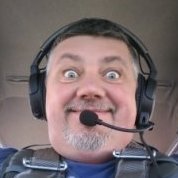
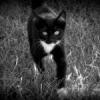

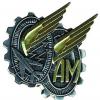
.thumb.jpg.d17ff607fc7e89ed057e63fcb6f2a888.jpg)
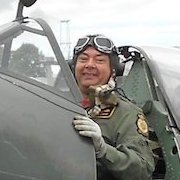

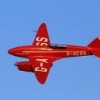



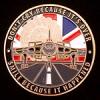
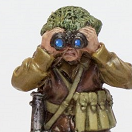
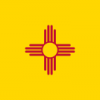
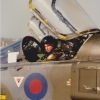


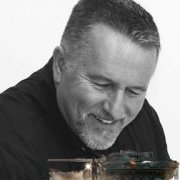
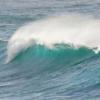
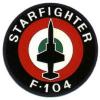
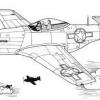




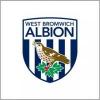
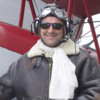
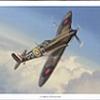


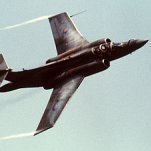

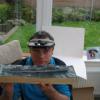




.thumb.jpg.76f12b87ce9ca9929c9aabdcf8f9d2dd.jpg)